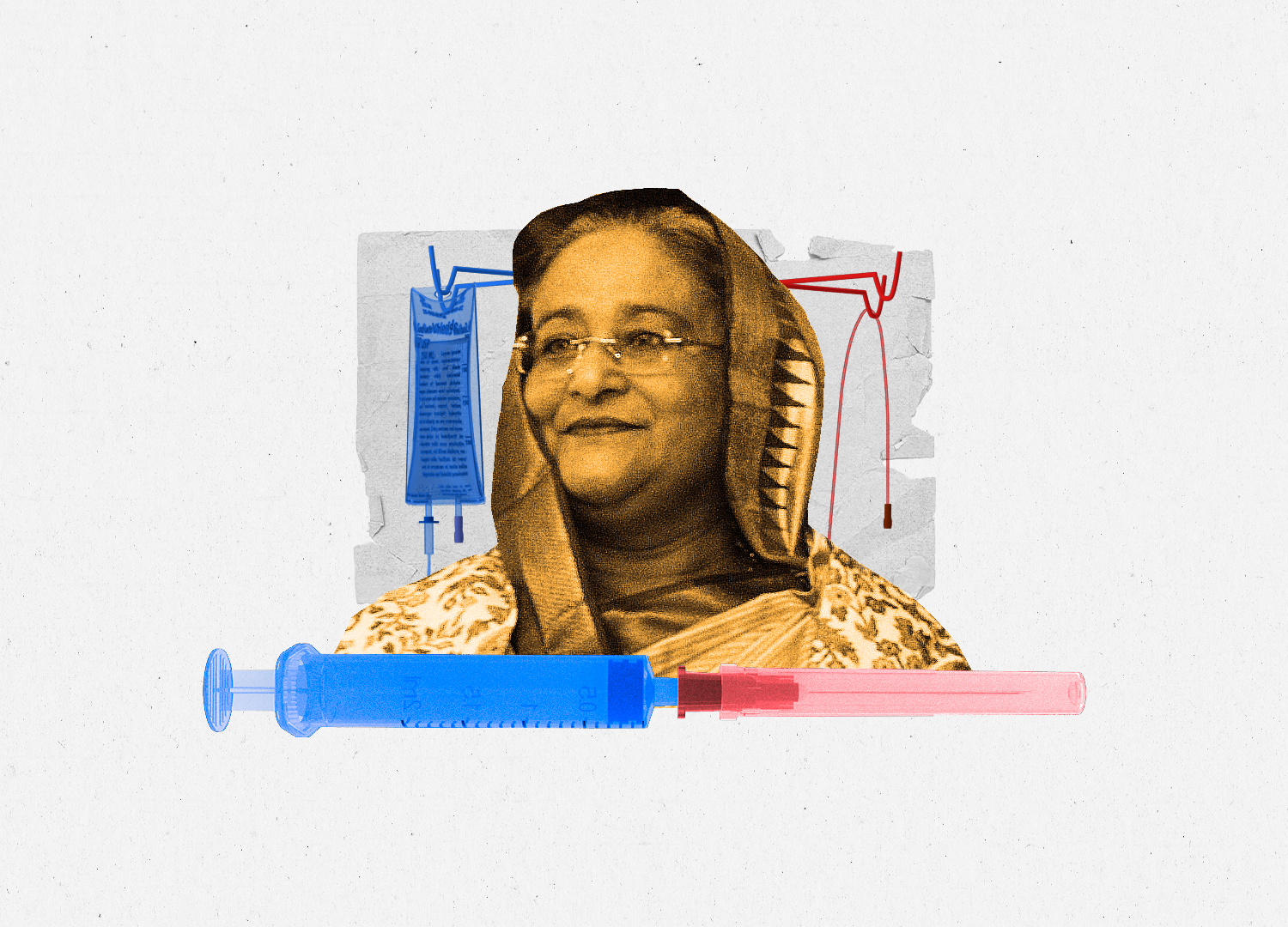What does "No treatment, No release" mean?
The prosecution of the International Crimes Tribunal says Hasina ordered Pongu hospital to stop treating July massacre victims last year. They risk misinterpreting a phrase.

On the morning of February 23rd 2025, six months after Sheikh Hasina was ousted from power, the court convened to try her for alleged crimes.
During a press conference, the chief prosecutor, Tajul Islam, made a shocking claim. He accused the former prime minister, Hasina, of ordering doctors not to treat patients during the three-week-long protests in 2024, in which hundreds of protesters lost their lives.
“[At] Pongu Hospital, also called NITOR. When we visited that hospital, the injured patients and their family members told us that Sheikh Hasina had visited them once before fleeing the country. At that time, she ordered ‘no treatment, no release’ of the injured,” Tajul claimed.
According to the chief prosecutor’s interpretations, the phrase “No treatment, no release” meant that Sheikh Hasina ordered the on-duty doctors and hospital authorities not to provide treatment to the injured or allow any of those patients to leave the hospital. He claimed that the doctors at the hospital confirmed it as well.
Tajul Islam did not stop there. On August 4th, a day after the trial against Sheikh Hasina and her administration began for their role in last year’s massacre, the prosecution team presented a victim as a witness, Abdullah Al Imran, who overheard Sheikh Hasina saying, “no treatment, no release” to the doctors, when she was visiting the National Institute of Traumatology and Orthopaedic Rehabilitation (NITOR), on July 27th 2024.
According to Imran, when Sheikh Hasina realised that he was a protester, she ordered the people at the hospital help desk, “no release, no treatment”, and according to him, the doctors stopped treating him properly after that.
Imran complained that the medicines provided by the hospital were ineffective, and the authorities denied him permission to leave the hospital. “I realised this was a result of Sheikh Hasina's directive against any release or treatment.”
However, the interpretation and the inference are anything but correct.
Rumi Ahmed Khan, a physician and Professor at Dell Medical School at the University of Texas, Austin, told Netra News that, while the phrase might be interpreted in multiple ways, it typically should mean, “don’t release the patients without treating them.”
Dr. Khan acknowledged that those aware of Sheikh Hasina’s vindictive nature toward her adversaries might reasonably assume that she instructed hospital staff to keep the injured patients hospitalised without providing them with life-saving treatment, “However, in any hospital setting, admitting a patient means taking full responsibility for their care, including feeding them and attending to any emergencies.”
He suggested that, instead of entirely relying on the witness or the prosecution, in a competent judicial system, the patient’s medical chart should be summoned, along with the nursing record, to verify the claims.
However, eminent lawyer Shahdeen Malik thinks that it is the responsibility of the defence counsel to explain the phrase. "He (defence counsel) might say: Hasina didn't mean this, she meant something else. Then the prosecutor will argue that she meant what the prosecutor said. Thus, after hearing both sides’ arguments, the justice will deliver a judgment on what Hasina really meant."●